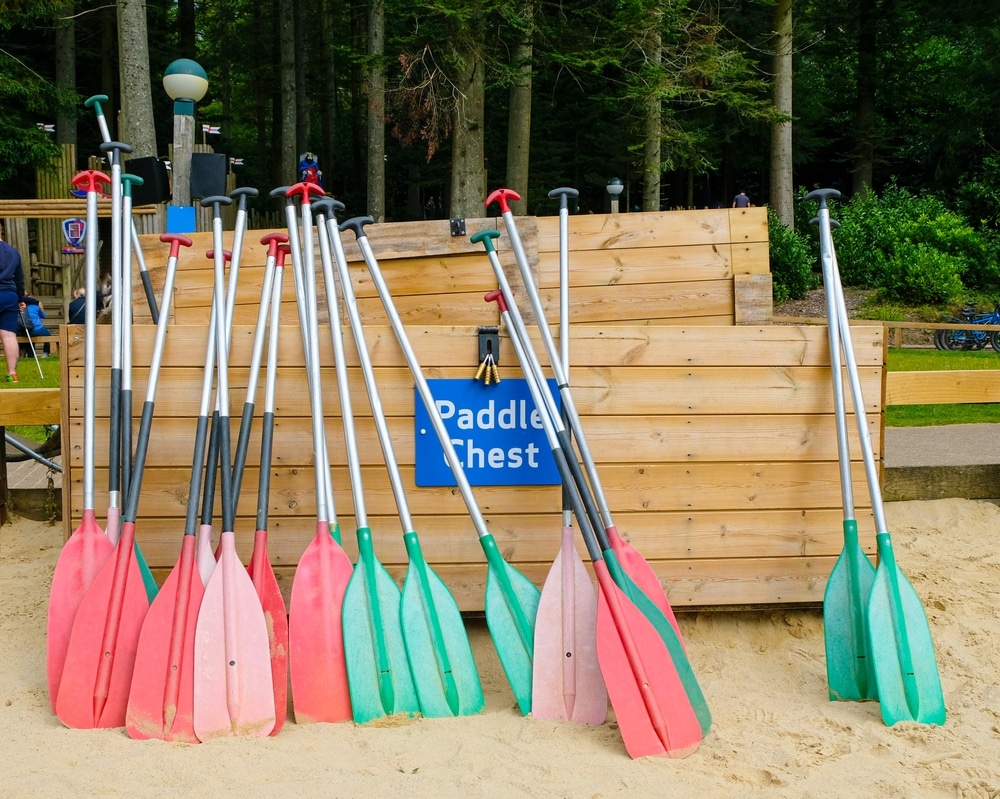For a smooth and enjoyable kayaking experience, choosing the right kayak paddle size is necessary. When paddling in a recreational kayak, a tandem kayak, or a fishing kayak, the right paddle length and style can make a significant difference. It ensures the comfort, efficiency, and performance while paddling. Understanding the kayak paddle size chart can enhance your kayaking experience, reduce fatigue, and increase your control over the kayak. This guide will help you navigate the kayak paddle size chart and choose the right paddle length and style for your needs.
Understanding Kayak Paddle Anatomy
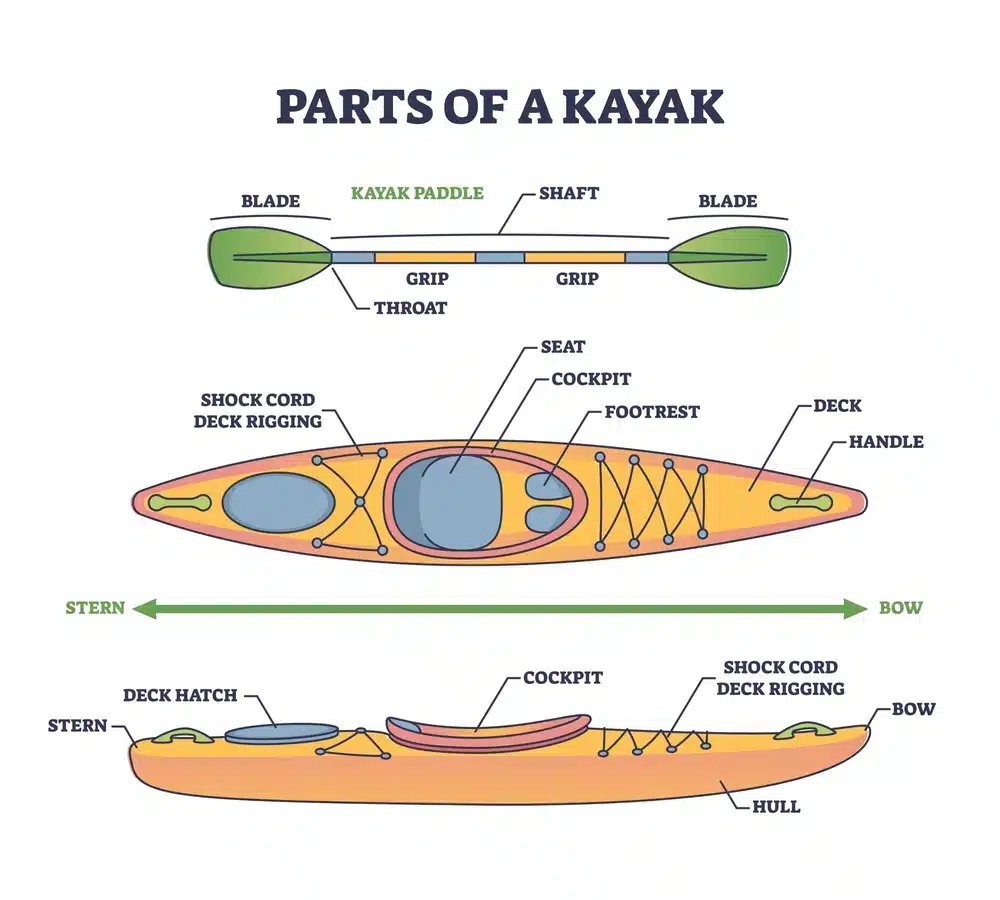
The size of the kayak paddle directly affects paddling comfort and efficiency. Either too long or too short a paddle can cause ineffective strokes, tiredness, and even injuries. Knowing the right kayak paddle length is essential for every kayaker. Before diving into the size chart and style options, it’s essential to understand the basic parts of a kayak paddle.
Shaft
The long, straight part of the paddle.
Blade
The flat, wide part that goes into the water.
Grip
The end of the paddle where your hands hold the shaft.
| Paddler Height | Kayak Width < 23” | Kayak Width 24” – 28” | Kayak Width 29” – 33” | Kayak Width > 34” |
|---|---|---|---|---|
| Under 5’2″ | 210 cm | 220 cm | 230 cm | 240 cm |
| 5’2″ – 5’8″ | 220 cm | 230 cm | 240 cm | 250 cm |
| Over 5’8″ | 230 cm | 240 cm | 250 cm | 260 cm |
Measure Kayak Paddle Length from a Kayak Paddle Size Chart
A kayak paddle size chart is beneficial in finding the appropriate paddle length. Usually matching paddler height to kayak width, these charts advise the ideal paddle size. Here is an illustration of how to apply one:
Track Your Height
Find your height in the left column of the chart.
Compatibility with Kayak Width
Calculate your kayak’s width from the top row.
Calculate Paddle Length
Use the row and column to determine the advised length.
Measure Kayak Paddle Length from a Kayak Paddle Size Chart
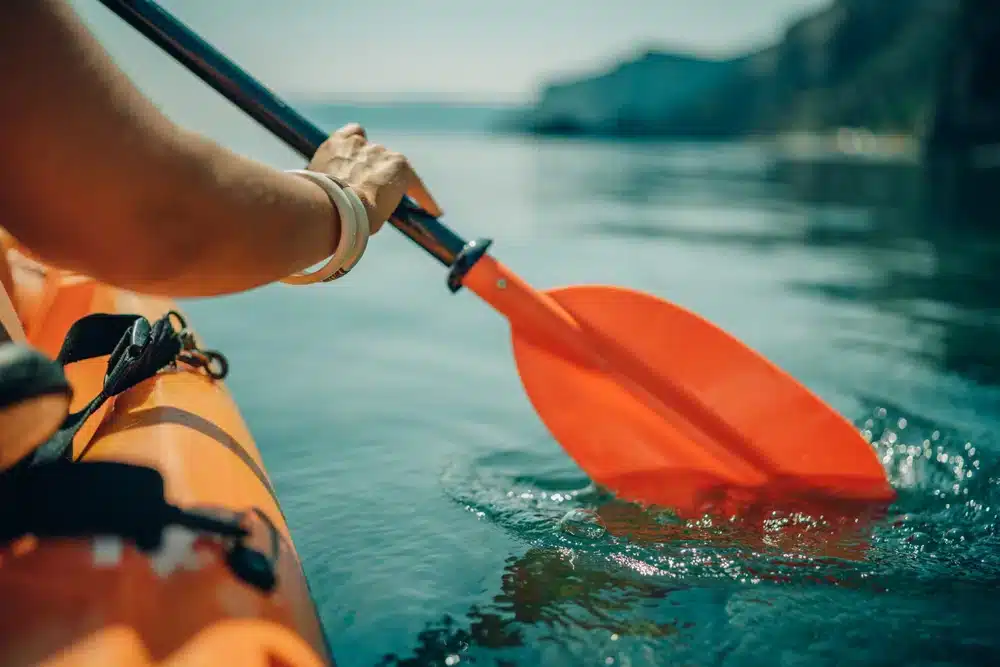
Several elements influence your ideal paddle size: your height and weight, kayak dimensions, and the water you’ll be paddling in. Here are some important factors.
1. Weight and Height
Your body type exactly determines the appropriate paddle length. While shorter paddlers should choose shorter paddles, taller paddlers typically choose longer paddles.
2. Kayak Length
The width and kind of kayak will determine the length of the paddle you use for yours. Shorter kayaks, for example, call for a paddle length different from longer kayaks.
3. Kayak Width
The width of your kayak also affects the paddle length. Wider kayaks require longer paddles to ensure that the blades can reach the water without excessive strain on your arms and shoulders.
4 Kind of Water
The kind of water you intend to paddle in also determines paddle size. A longer paddle would be more suited for sea kayaks or open water. On narrow rivers and streams, shorter paddles are typically ideal.
5. Paddle Blades
Performance might also be affected by the paddle blades’ form and dimensions. Smaller blades are easier to wield and better for longer journeys; larger blades offer more power but demand more strength.
- Asymmetric Blades
These blades are shorter on one side, reducing torque and making them easier to handle.
- Symmetric Blades
These are identical on both sides and are more common in recreational paddles.
- Large Blades
They provide more power and are suitable for strong paddlers or whitewater kayaking.
- Small Blades
It is easier to handle and better for long-distance touring or smaller paddlers.
6. Paddling Style
Low-Angle Paddling
This relaxed style, where the paddle is kept at a low angle relative to the water, is ideal for long-distance paddling and touring. It requires a longer paddle.
High-Angle Paddling
This aggressive style involves a higher angle and is suited for whitewater or quick, powerful strokes. It requires a shorter paddle.
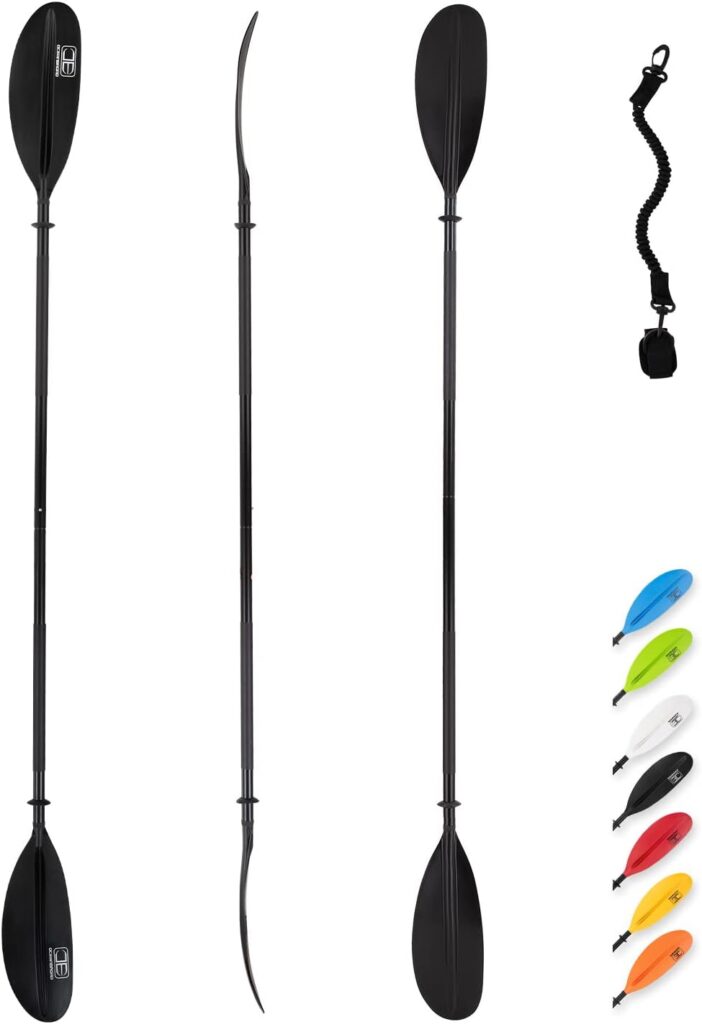
Product Details
- Color Black
- Material Aluminum
- Manufacturer OCEANBROAD
- Size 90.5''- 1 Paddle
Kayak Types and Their Paddle Needs
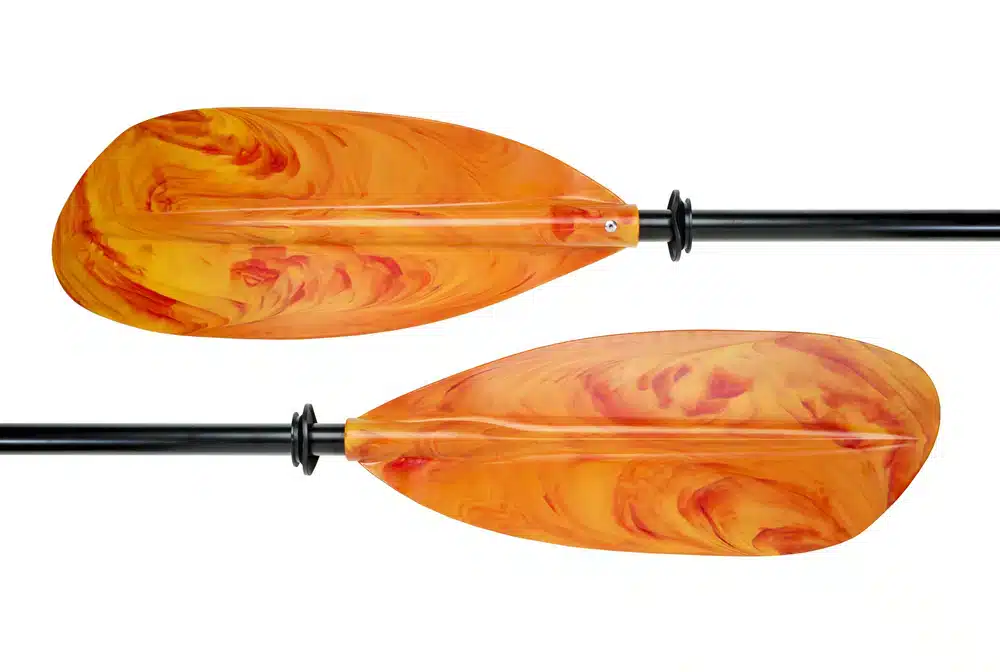
Various kayaks call for varied paddle lengths, with different kayak paddle size charts. Common kayaks are broken down here, along with their paddle sizing requirements:
Leisure Kayaking
Usually shorter and wider, recreational kayaks are solid and easy to use. They usually fit a paddle length of 220 to 240 cm.
Double Kayak
Tandem kayaks are usually longer and wider than single kayaks and are made for two people. The width will determine whether or not you require a paddle length between 230 and 250 cm.
Fishing Kayaks
Fishing kayaks are usually wider to enable casting and reeling in fish. They offer stability. A 240—to 260 cm paddle length will help provide additional control and reach for these kayaks.
Sit on top Kayaks
Often utilized in recreational environments, sit-on-top kayaks are adaptable and user-friendly. They usually require a 230—to 250-centimeter paddle length.
High-Volume kayaks
High-volume kayaks are meant for bigger paddlers or more equipment transportation. Moreover, to fit their broader size, these kayaks sometimes require longer paddles—between 240 and 260 cm.
Sea Kayaks
Long-distance travel and open water circumstances define sea kayaks’ design. Because they are longer and slimmer, effective paddling calls for a paddle length of 210 to 230 cm.
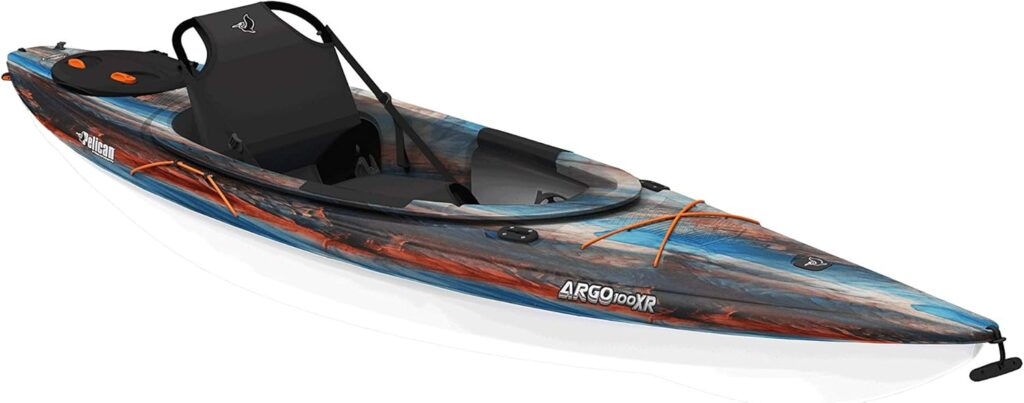
Product Details
- Brand Pelican
- Item Weight 43 Pounds
- Material Plastic
- Color Cosmos
- Style Recreational
Selecting the Correct Paddle Style
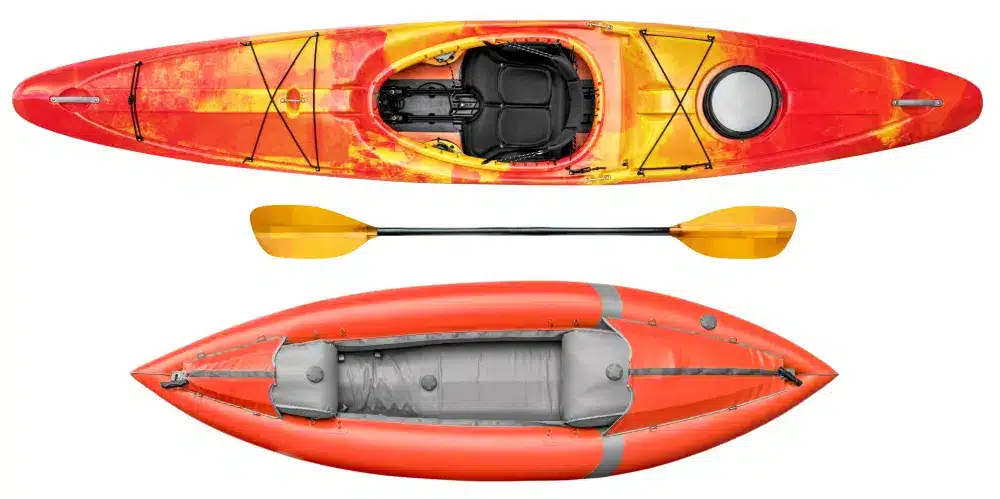
Shapes for Paddle Blades
The performance and efficiency of the paddle blades depend on their shape. Two main kinds exist.
- Asymmetric blades are the most often used blades. Moreover, they are designed to lower flutter and increase stroke efficiency, making them perfect for most kayaking pursuits.
- Conventional paddles have symmetrical blades that occur less often. Also, these blades are suitable for particular paddling disciplines, including whitewater kayaking.
Paddle Material
Additionally, paddle materials are very important for performance and comfort.
Aluminum
Affordable and durable, but heavier. Ideal for relaxation and beginners.
Fiberglass
Lightweight and strong, offering a good balance of performance and price. Perfect for intermediate kayakers.
Carbon Fiber
Extremely lightweight and efficient but more expensive. Therefore, it is perfect for extreme kayakers who give performance priority.
Design of a Paddle Shaft
Your grip and control can suffer from the shaft design. Two main categories exist.
Straight Shaft
Simple and traditional, it is suitable for most paddlers.
Bent Shaft
Ergonomically designed to reduce strain on the wrists and improve paddling efficiency.

Product Details
- Brand Karltion
- Color Black
- Material Fiberglass
- Sport Surfing
- Skill Level Beginner
Tips for Paddle Care and Maintenance
Rinse Kayak Paddle with Fresh Water
This will prevent corrosion after each use, especially in saltwater.
Inspect Regularly
Check the kayak paddle for cracks, dents, or other damages.
Store Properly
To avoid material degradation, keep the kayak paddle in a cool, dry place away from direct sunlight.
Conclusion
A fun and effective kayaking experience depends on selecting the correct kayak paddle size and design. You can make an informed decision by understanding the factors that influence paddle sizing—such as your height, the dimensions of your kayak, and the type of water you’ll be paddling in. To determine the suggested paddle length, use a kayak paddle size chart; then, consider paddle comfort and performance in relation to materials and design. Thus, the correct paddle will improve your time on the water, whether your kayak is fishing, tandem, or enjoyment.
